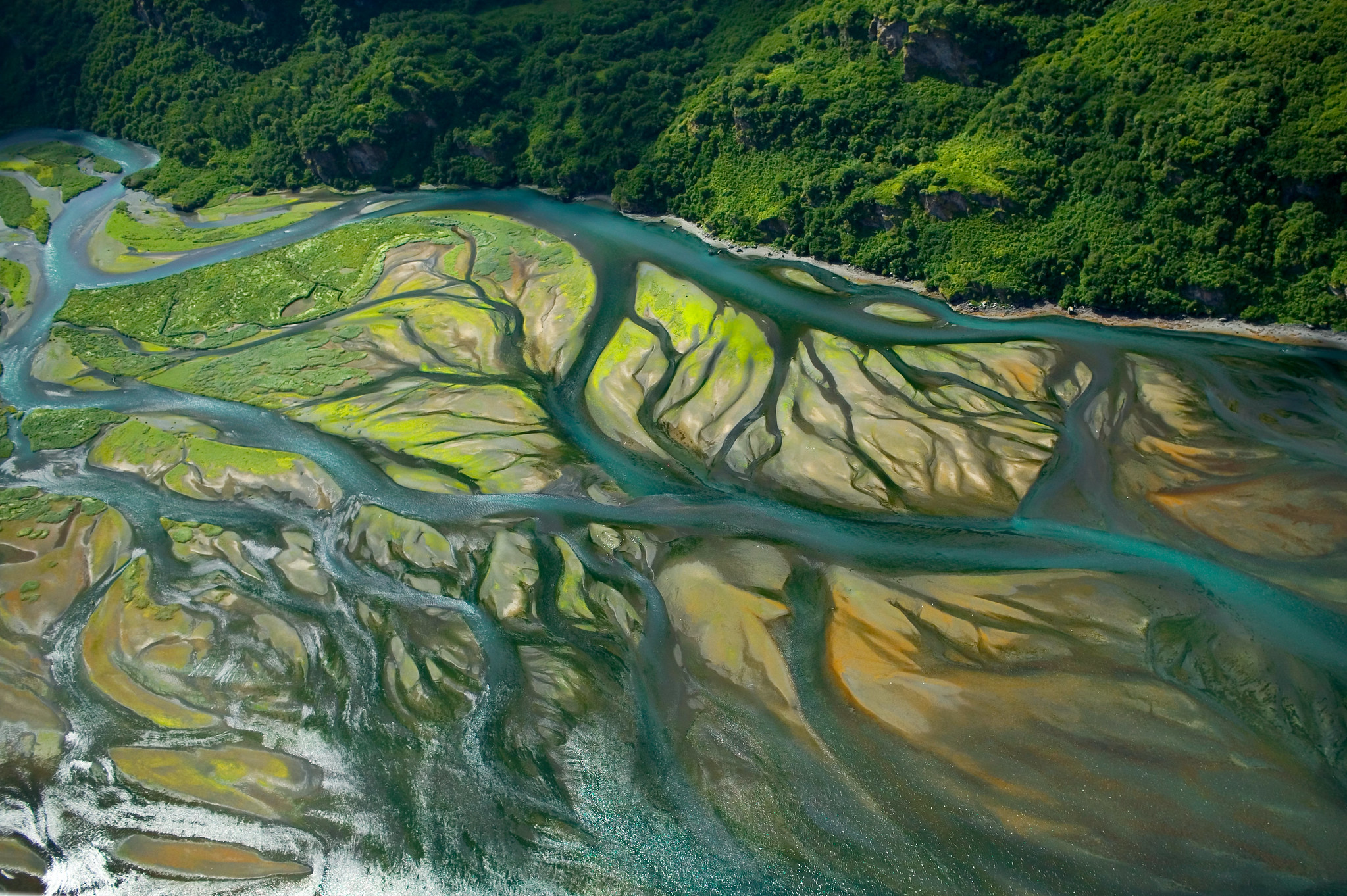Water
 If the continental United States represented the entire surface of the earth, water would cover as much as every state west of the Mississippi River, with enough left over to cover the state of New York. Of the total volume of water on earth, about 97% is saltwater, and only about 3% is fresh. 98% of the freshwater is locked away in groundwater, ice caps, and glaciers, meaning only 2% of the world’s freshwater is available for human use. That’s about 148 gallons per person on Earth. In comparison, a 10-minute shower can take between 20 and 50 gallons of water.
If the continental United States represented the entire surface of the earth, water would cover as much as every state west of the Mississippi River, with enough left over to cover the state of New York. Of the total volume of water on earth, about 97% is saltwater, and only about 3% is fresh. 98% of the freshwater is locked away in groundwater, ice caps, and glaciers, meaning only 2% of the world’s freshwater is available for human use. That’s about 148 gallons per person on Earth. In comparison, a 10-minute shower can take between 20 and 50 gallons of water.
The Earth typically does not gain or lose water in substantial amounts, so the water you use likely existed, in some form, before the first living creature evolved. While the amount of water on the planet does not change significantly, the amount of water in parts of Earth’s system can fluctuate wildly. In addition, water is not distributed evenly across the land surface. The result is that some areas are climatically wetter or drier than others, which shapes local agriculture and restricts which crops and livestock can prosper in a given region.
In the United States, some areas are expected to become drier as the climate, including average temperature and average precipitation, changes. Conversely, other areas are predicted to become wetter. The frequency of extreme weather events--severe floods, persistent drought, and severe storms--is also expected to change in some regions. The effect of climate change on water availability and wet and dry seasons has numerous potential implications for agriculture, especially in areas where the climate is expected to become less suitable to sustained agricultural production.
-
Understanding Soil Health and Watershed Function: A Teacher's Manual
By studying soil health principles, future farmers can learn to harness the power of biological work to help them…
-
Asombro Teacher Workshops: Climate Change in the Southwest
Asombro Institute workshops during Summer 2021 help teachers share current climate research with students
-
Climate Change Impacts to Coastal Forests
Rising sea levels and intense storms along the mid-Atlantic and southern New England coast are damaging and killing…
-
Building Water Resilience in the Northwest Through Rangeland Management
Information about how to avoid and cope with current and expected changes to water resources and rangeland health.
-
Keeping California Forests and Woodlands Healthy
The Healthy Forests briefs series, authored by the Science Advisory Panel of the California Governor’s Forest…
-
UMES Permeable Reactive Barriers
Heavy rain events are increasing across the Northeast, which can result in more nutrient leaching on farms. At UMES,…
-
Drought Learning Network updates
At least 95% of resource managers want to hear from peers about lessons learned during drought. The Drought Learning…
-
Siembra Tres Vidas, Puerto Rico Case Study
Siembra Tres Vidas is a farm on the southern side of the central mountains of Puerto Rico in the town of Aibonito where…
-
Climate Change and Aquaculture in Connecticut’s Long Island Sound
Aquaculture farms are especially vulnerable to climate change as organisms and operations are continually exposed to…








